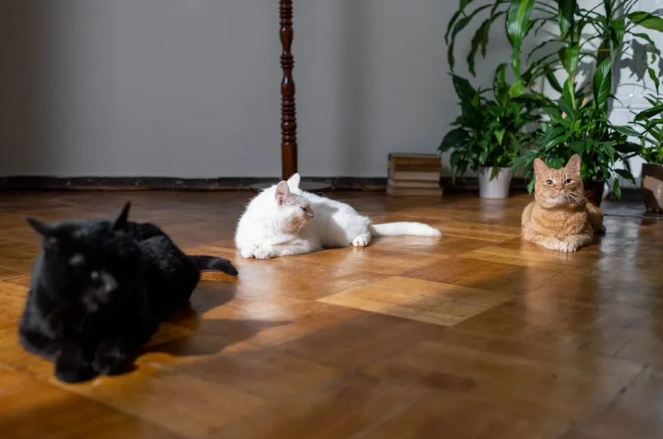Find a warm place: Commonly found near a heater, in direct sunlight, or near a hot water bottle.
Touch cold ears and pads: Your cat’s ears and pads will feel cooler to the touch when they feel cold.
Loss of appetite: Cold will affect the cat’s metabolism and make the appetite worse.
Reduced activity: In order to conserve energy and keep warm, your cat may decrease its activity and become quieter than usual.
Curling up: Cats will curl up into a ball to reduce their surface area to maintain body temperature.
Physiological response: Touching cold ears and foot pads: When cats feel cold, their ears and foot pads will be cooler to the touch.
Drop in body temperature: You can tell if your cat is feeling cold by using a thermometer or observing changes in behavior.
Changes in appetite and digestion:
Loss of Appetite: Cold weather can affect your cat’s metabolism, so they may reduce their food intake.
Digestive issues: Some cats may experience indigestion or reduced food intake due to the cold.
What the master needs to do:
Warm sleeping place: Prepare a warm and comfortable sleeping place for your cat. Consider adding a blanket or heating pad.
Keep indoors warm: Especially in winter, ensure the indoor temperature is suitable and avoid excessive cold air flow.
Avoid outdoor activities: Especially in cold weather, reduce your cat’s outdoor time to avoid catching cold or excessive cold.
Provide adequate nutrition: Appropriately increase the cat’s food intake to cope with energy consumption in the cold season.
Check your cat’s health regularly: Take your cat to the vet regularly for health checks to make sure their body temperature and overall health are good.
Post time: Jul-11-2024

